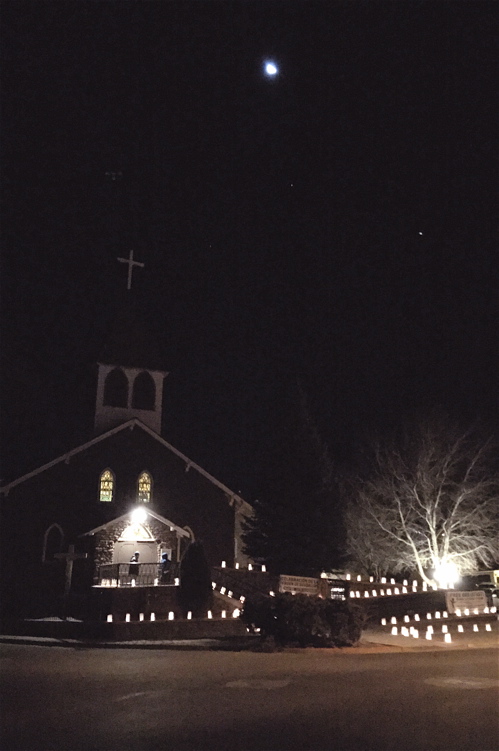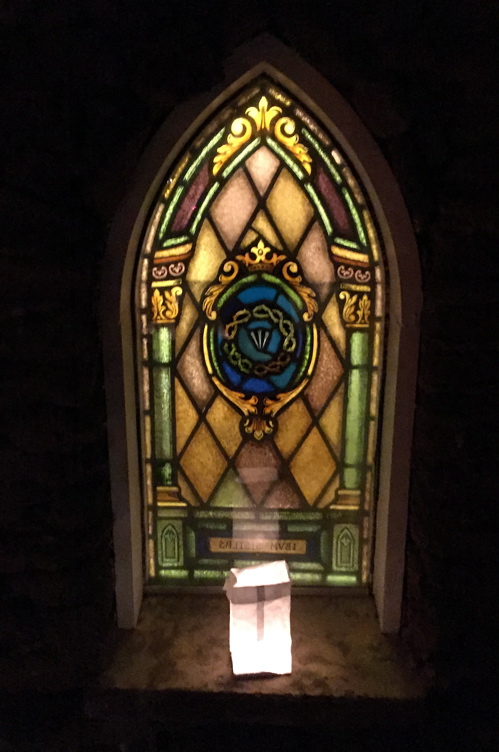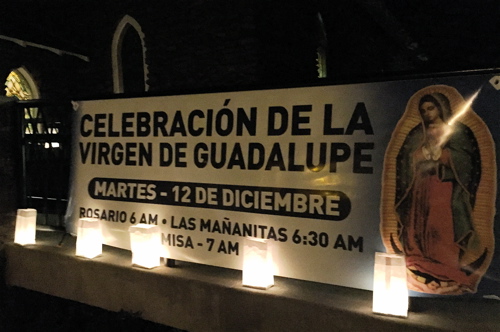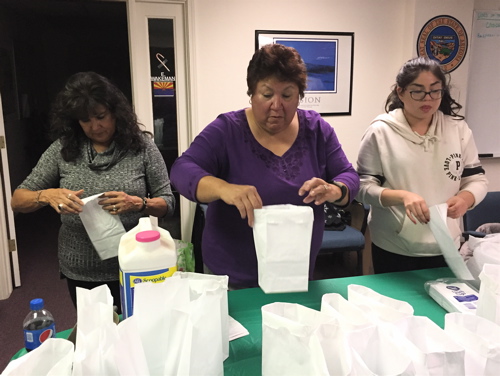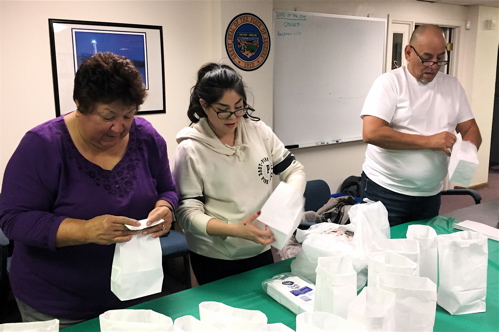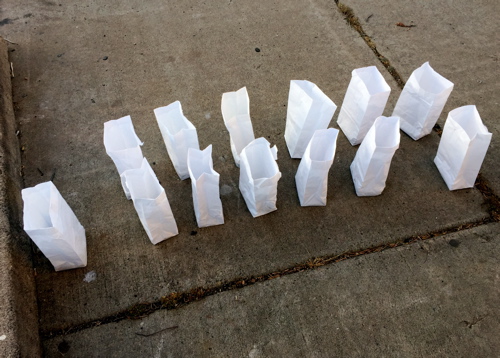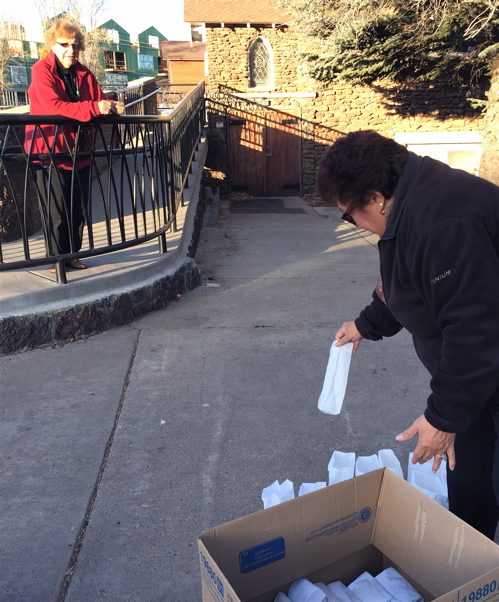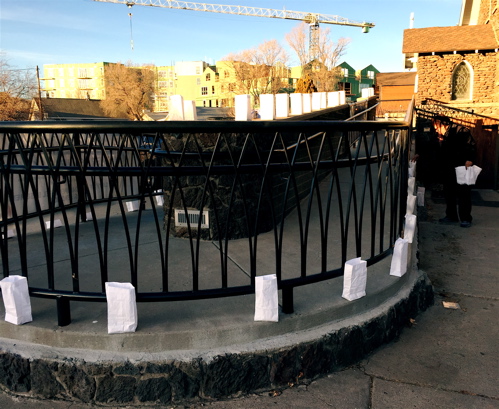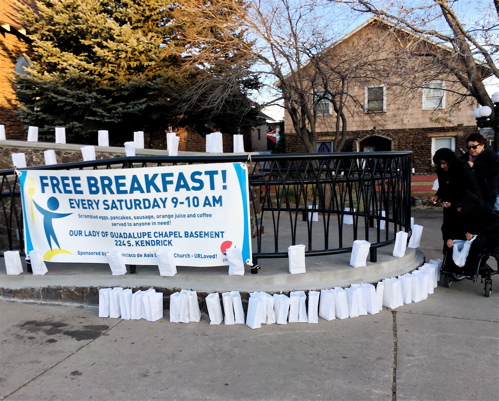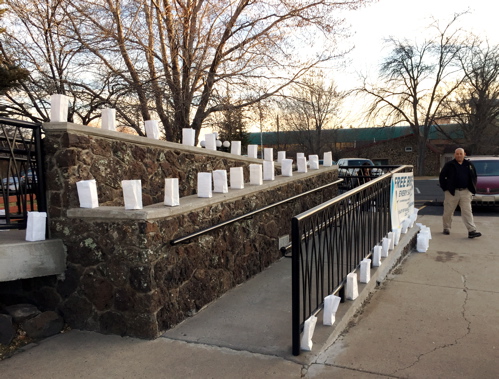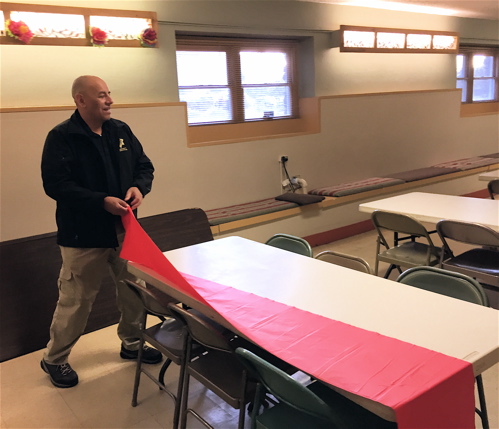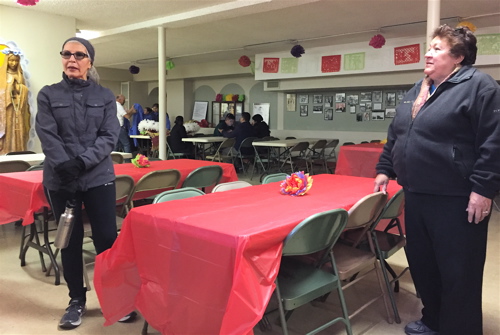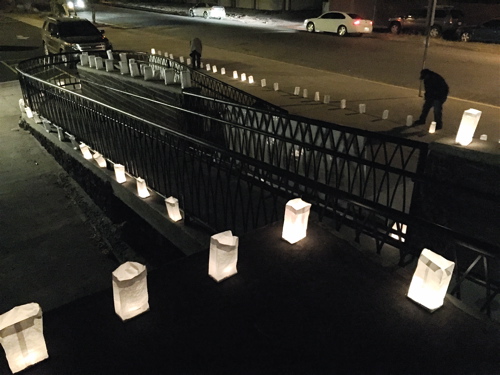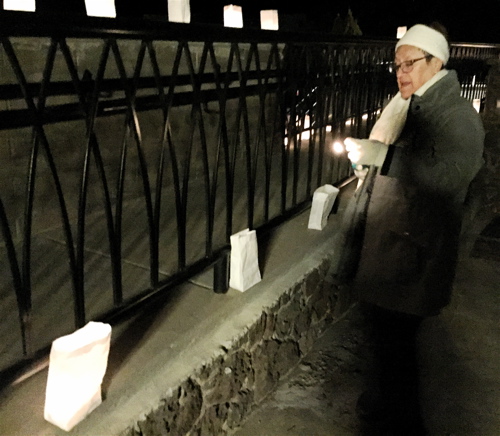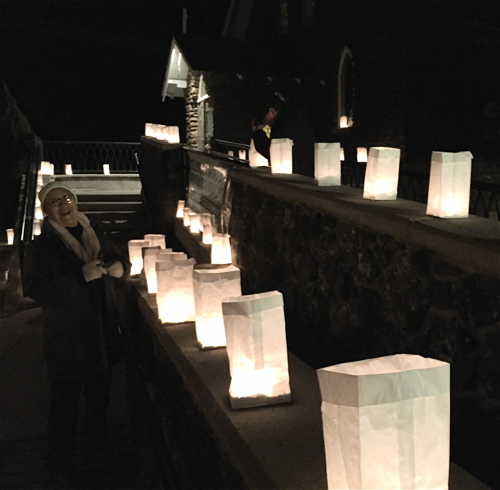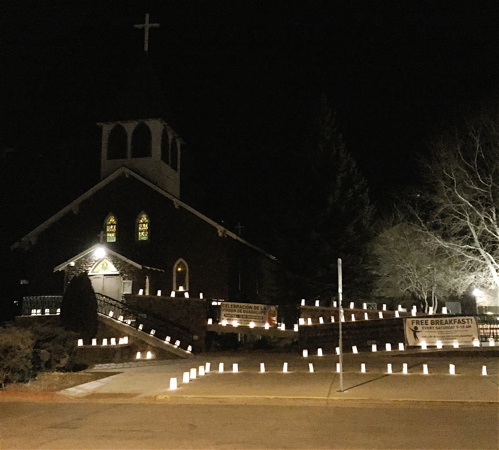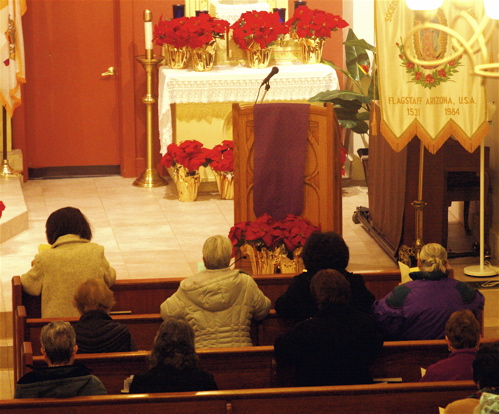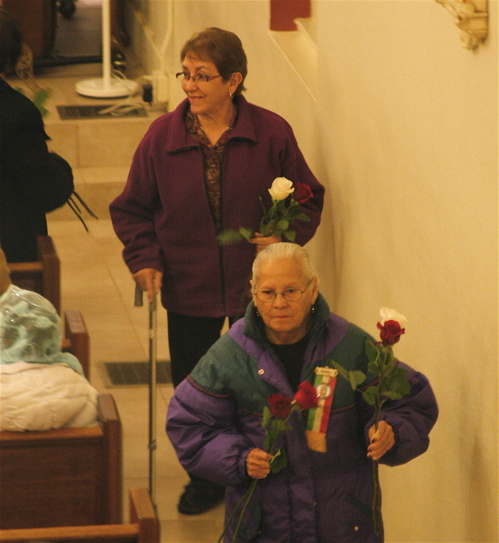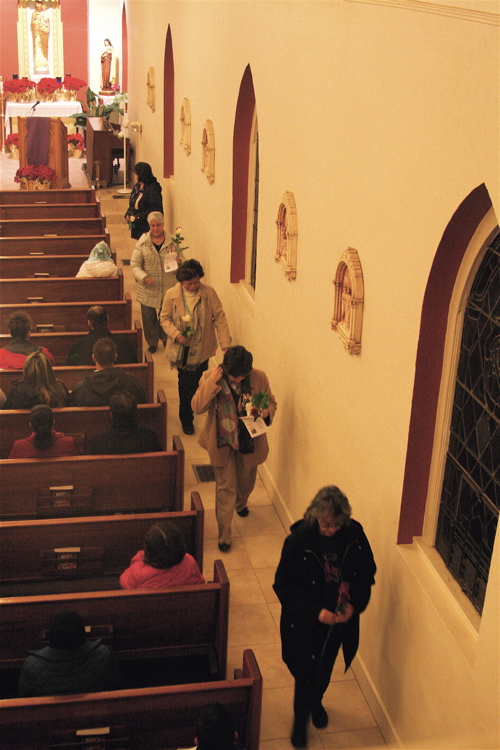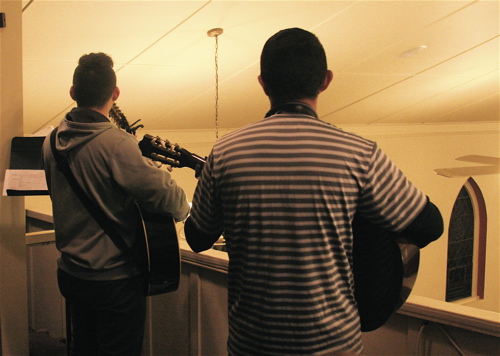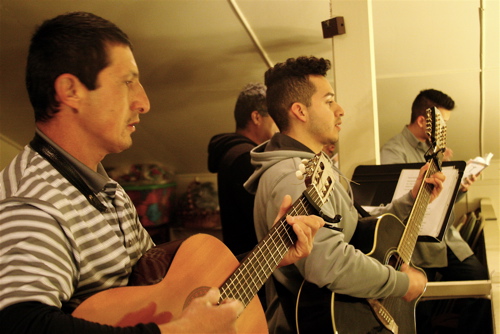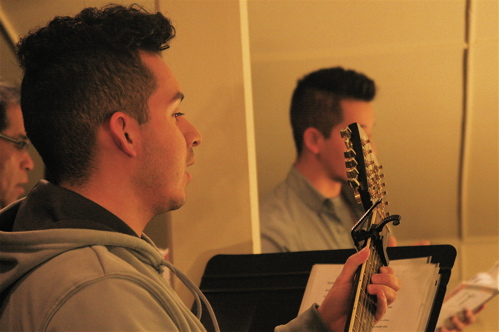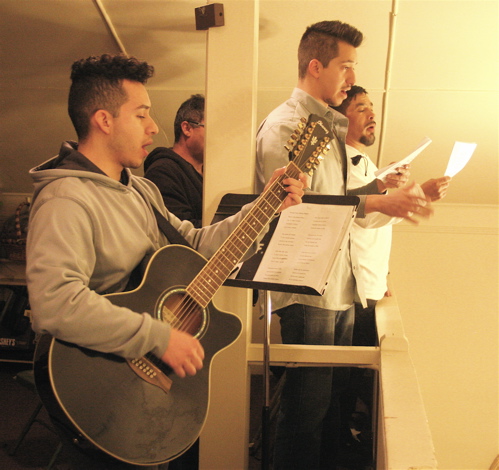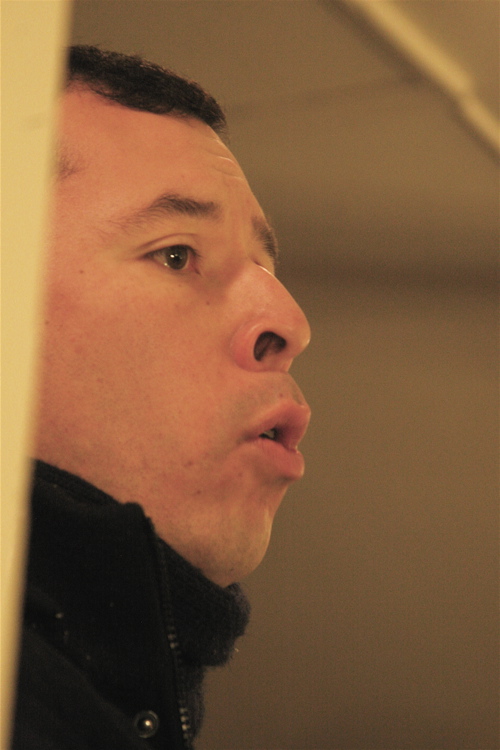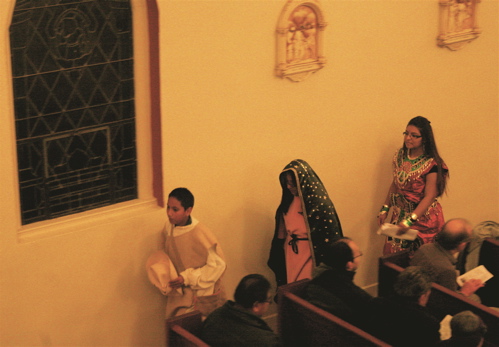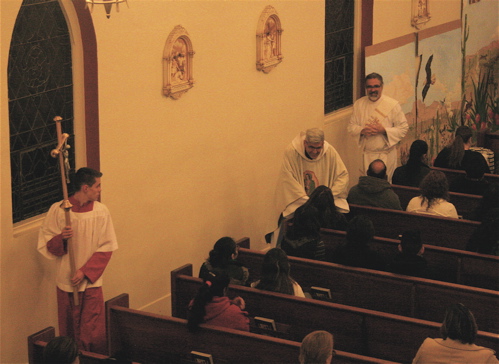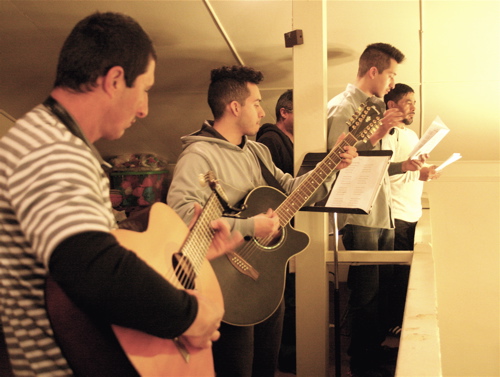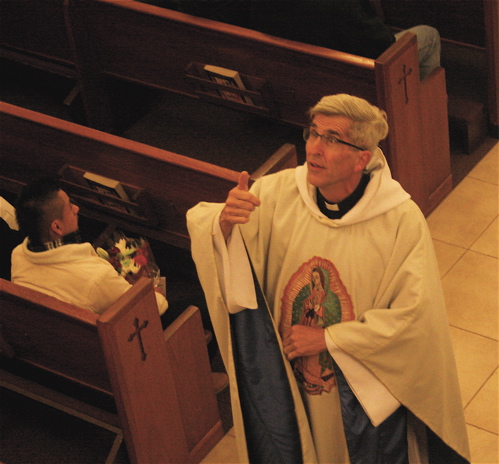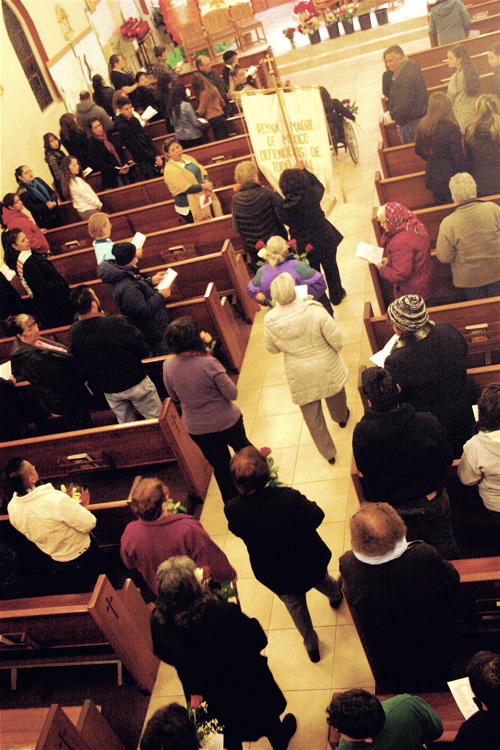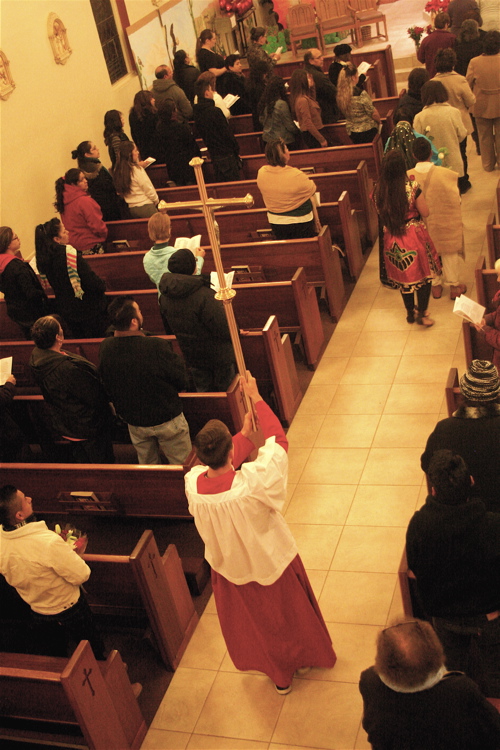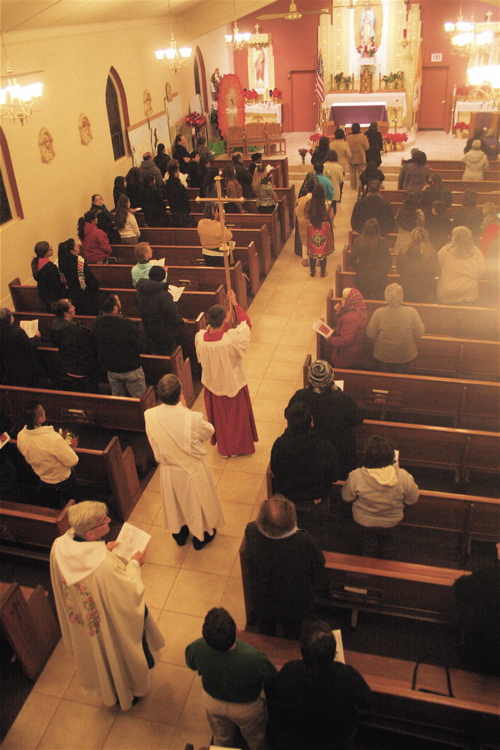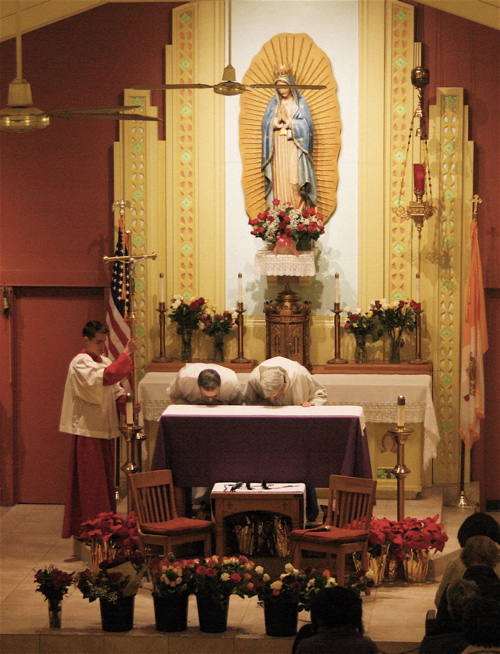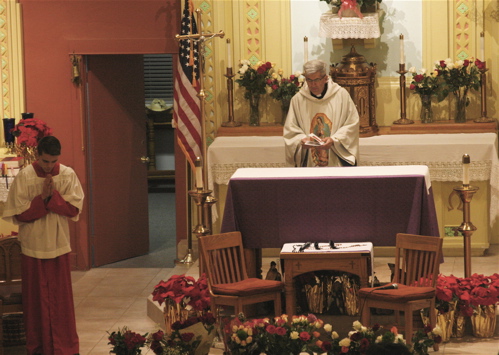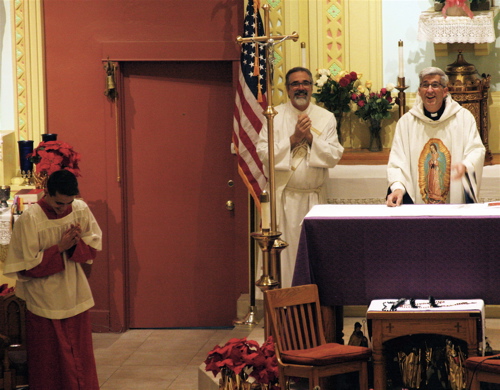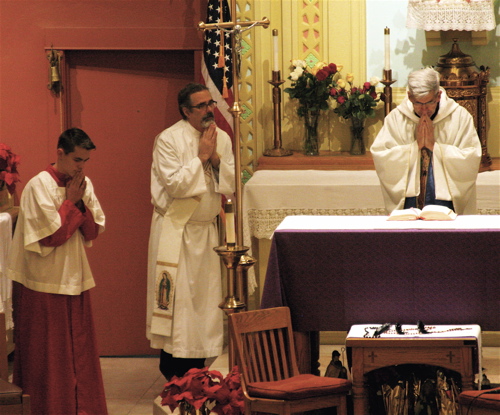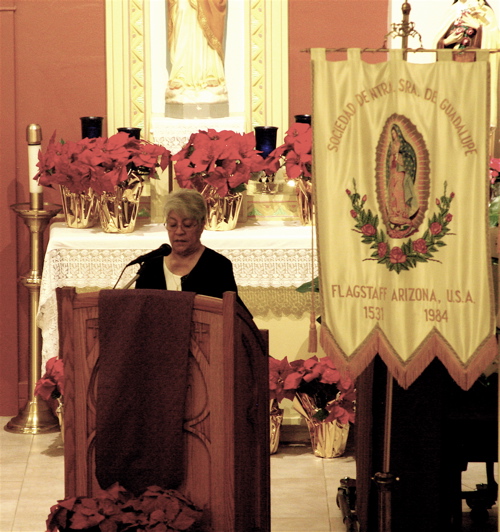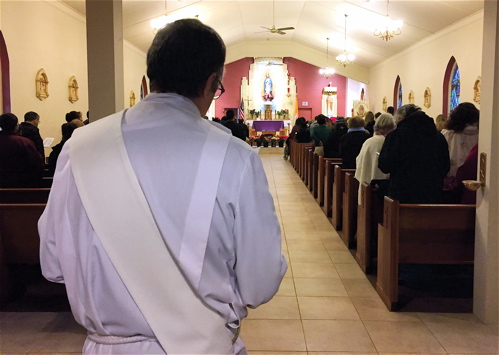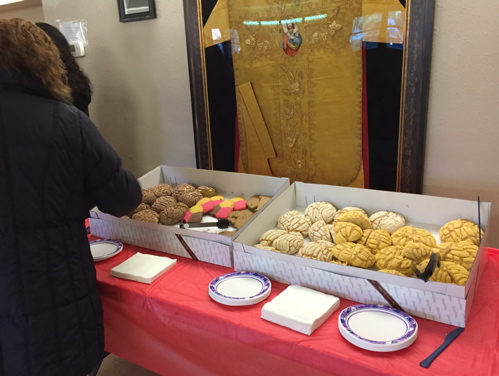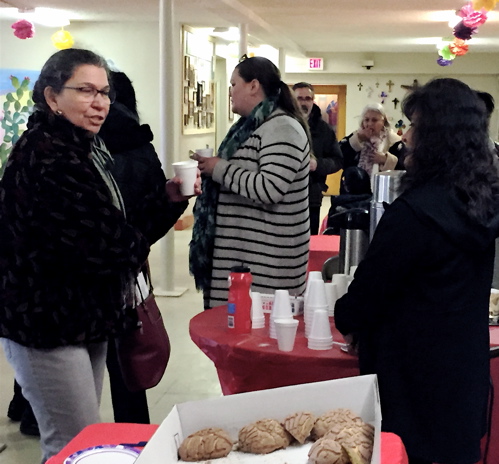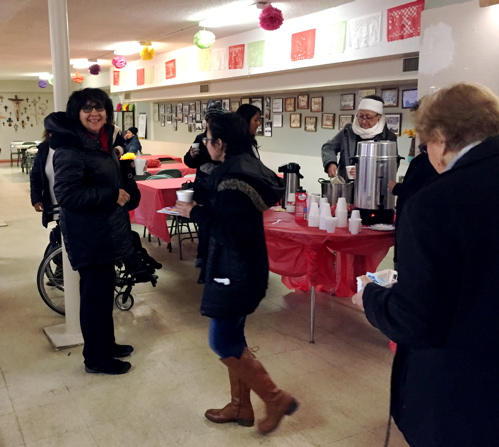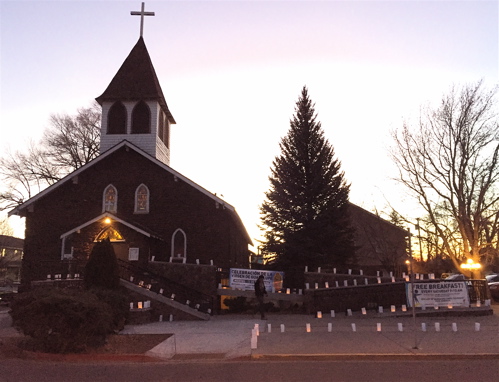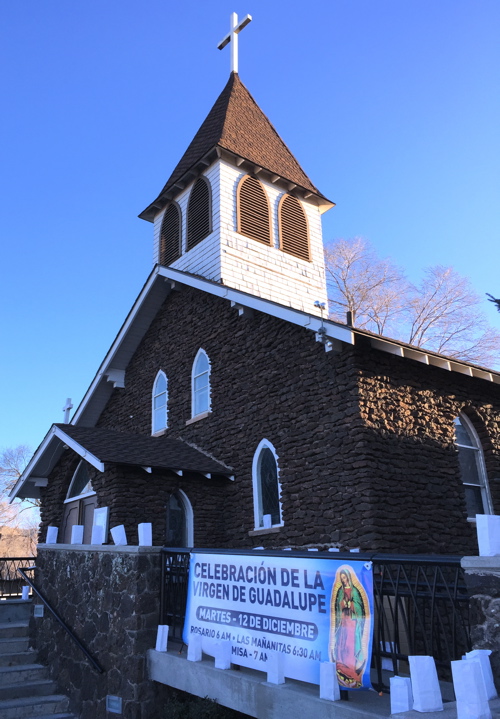Photos by Frank X. Moraga ©2017
FLAGSTAFF — Amid the glow of nearly 200 luminarias, worshippers entered Our Lady of Guadalupe Catholic Church during the pre-dawn hours to attend the annual Our Lady of Guadalupe Celebration / Celebración de la Vigen de Guadalupe on Tuesday, Dec. 12.
The celebrations began with a Rosary, followed by a performance of Las Manañitas and the recital of the Mass presided by Father Patrick Mower. Young people from the church also presented a play telling the story of the beautiful dark-skin Virgen de Guadalupe, who first appeared to Juan Diego on the slopes of the hill of Tepeyac as a vision of the Virgin Mary.*
The celebration was presented by Sociedades Guadalupanas.
Following the ceremonies, worshippers were encouraged to attend a Café y pan breakfast downstairs at the Our Lady of Guadalupe Catholic Church Cultural Center “The Basement,” hosted by members of Flagstaff Nuestras Raíces.
The group has been involved in placing the luminarias** around the church for several years, with the process beginning several days before with the filling of the white bags with sand. The bags were placed around the church on Monday, Dec. 11 prior to the annual procession from Our Lady of Guadalupe Catholic Church to San Francisco de Asis Catholic Church. Members of Flagstaff Nuestras Raíces then braved the 21-degree temperature to start lighting the candles at 5:30 a.m. Dec. 12 prior to the celebration.
***
* In Mexico, many thousands of the faithful arrive in Mexico City to make a pilgrimage to the Basilica of Guadalupe to view the image of la Virgen Morena (the Dark Virgin). It is said to be the most visited Catholic pilgrimage destination in the world. By car, bus, bicycle and by foot, they all arrive, with many making their way to the basilica on their knees to show their devotion. According to one story, the name Guadalupe is believed to come from the native Nahatl word Coatlaxopeuh. The beautiful dark-skin Virgen de Guadalupe first appeared to Juan Diego on the slopes of the hill of Tepeyac as a vision of the Virgin Mary on Dec. 9. Speaking to him in Nahuatl, she asked Juan Diego to have a church built at the top of the hill. He then told his story to the Spanish archbishop, who told Juan Diego to return to the hill and ask her to provide a miracle. Upon his return on Dec. 12, she told Juan Diego to gather flowers at the top of the hill, and carry the flowers, Castilian roses, in his tilma or cloak to the archbishop. Upon opening his cloak in front of the archbishop, the flowers fell to the floor with the image of the Virgin of Guadalupe imprinted on the fabric. It is this image that can be found at the Basilica of Guadalupe.
** Luminarias are thought to have originated in New Mexico, but have spread throughout the U.S., including Flagstaff’s annual Luminaria Walk in the Coconino Estates Neighborhood starting at 6 p.m. Sunday, Dec. 17. Click here or here for more information from the Arizona Daily Sun.

